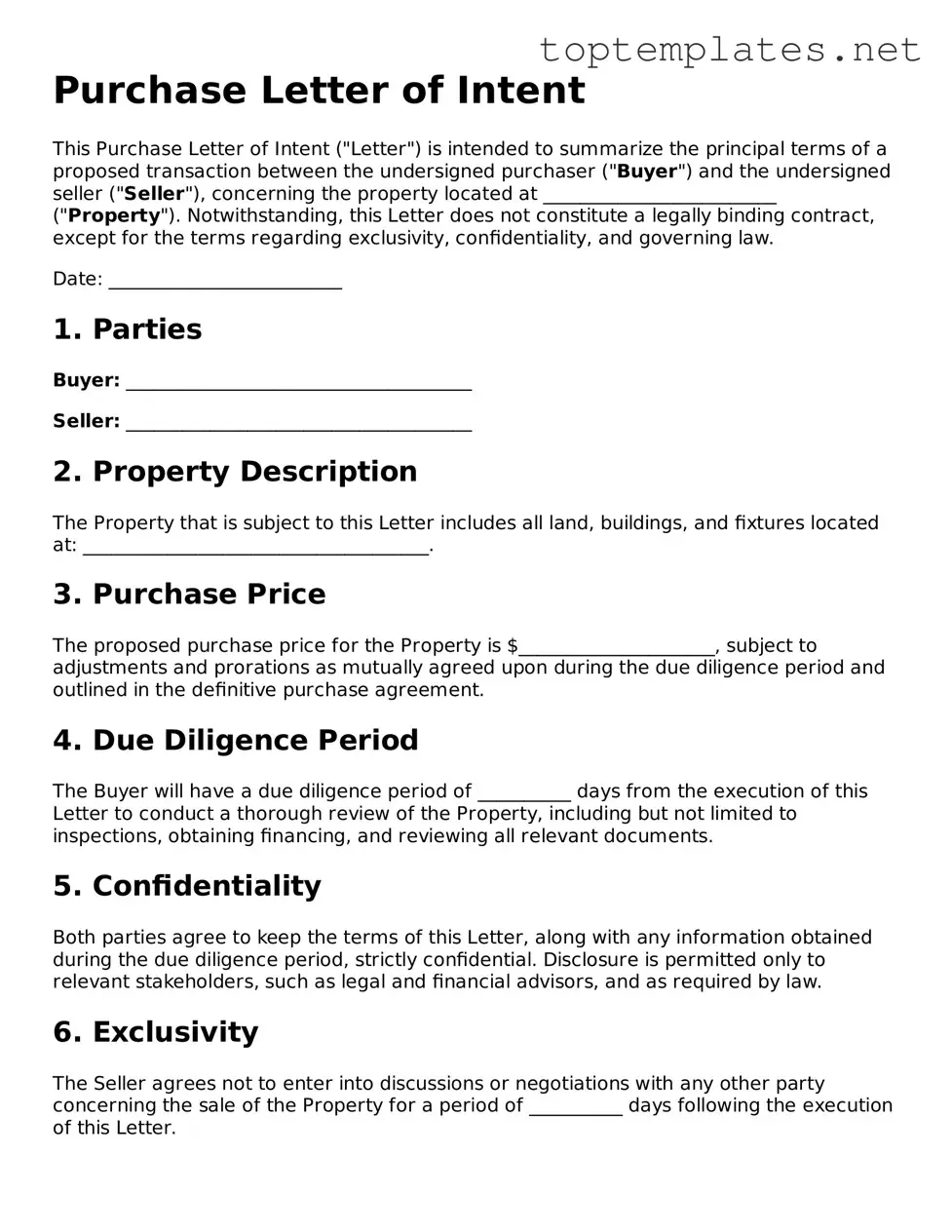What is a Purchase Letter of Intent?
A Purchase Letter of Intent (LOI) is a preliminary agreement between a buyer and a seller, outlining the basic terms and conditions of a purchase before a binding contract is finalized. It serves to express a serious commitment from the buyer to proceed with the purchase under certain agreed conditions.
Is a Purchase Letter of Intent legally binding?
Generally, a Purchase LOI is not legally binding regarding the sale's main terms; however, it can contain binding provisions, such as confidentiality and exclusivity clauses. It's crucial to carefully review these clauses to understand any legal obligations.
What should be included in a Purchase LOI?
A comprehensive Purchase LOI typically includes the purchase price, payment terms, a description of the property or item being bought, due diligence periods, closing date, and any contingencies that must be met before the transaction. It may also cover confidentiality and exclusivity terms.
How does a Purchase LOI benefit the buyer?
For the buyer, a Purchase LOI sets a framework for the negotiation, clearly stating their intent to purchase under certain conditions. It allows them to perform due diligence before entering a binding agreement and can secure the opportunity to purchase before others.
How does a Purchase LOI benefit the seller?
The seller gains a written commitment from the buyer, which can help weed out non-serious buyers. It also provides a basis for negotiations and, once signed, can provide some level of certainty about the sale proceeding.
Can either party back out after signing a Purchase LOI?
Since the LOI is generally not legally binding in terms of the sale agreement, either party can back out before a formal contract is signed. However, if there are any legally binding clauses within the LOI, such as confidentiality, the parties must adhere to these terms.
Does a Purchase LOI need to be drafted by an attorney?
While it's not mandatory to have an attorney draft a Purchase LOI, it's highly recommended. An attorney can ensure that the document accurately reflects the intent of both parties and that any binding clauses are clear and enforceable.
What happens after a Purchase LOI is agreed upon?
After the LOI is signed, the buyer typically proceeds with due diligence, such as inspecting the property or reviewing financial documents. Negotiations continue based on findings during this period. If both parties agree to move forward, a formal purchase agreement is then drafted and signed.
Can the terms in a Purchase LOI be changed later?
Yes, the terms in a Purchase LOI are not final and can be negotiated and changed before drafting the formal purchase agreement. The LOI serves as a starting point for negotiations, not the final agreement.
What happens if a party breaches the binding provisions of a Purchase LOI?
If a party breaches the binding provisions of a Purchase LOI, such as confidentiality or exclusivity, the wronged party may seek legal remedies, including damages. The specific recourse would depend on the breach's nature and the clause's wording.
